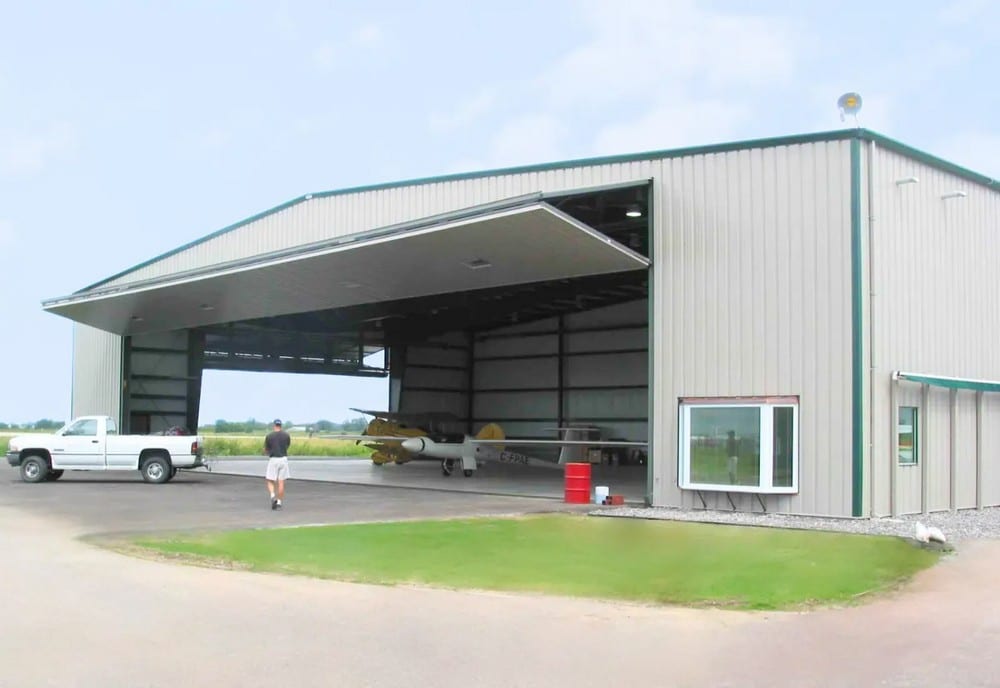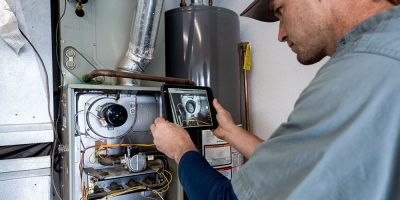
First and foremost, proper storage and maintenance maximize an aircraft’s service life. Consequently, in climate-controlled steel hangars, operators maintain interior temperatures between 18 °C and 24 °C and relative humidity (RH) between 40 % and 60 %, thereby protecting sensitive structures and components. Moreover, this climate-controlled airplane hangar building prevents UV exposure, moisture ingress, and thermal cycling from degrading airframes, avionics, and onboard systems. In addition, integrating smart monitoring systems enables technicians to track environmental parameters in real time and receive automated alerts whenever conditions deviate from set thresholds.
1. Protection from Extreme Weather
Aircraft withstand moderate temperature and humidity changes; however, prolonged exposure to heat waves or sub-zero temperatures accelerates material fatigue. Therefore, hangar staff use advanced HVAC units and desiccant dehumidifiers to hold internal temperatures within ±2 °C of the setpoint and maintain stable RH. As a result, this controlled atmosphere reduces buckling, warping, and brittleness in metallic and composite parts. Furthermore, it prevents thermal shock cycles—sudden shifts between hot and cold—that can generate microfractures in critical components and risk unexpected failures.
2. Prevention of Corrosion and Rust
High humidity and condensation trigger metal oxidation and the formation of rust, which undermine load-bearing parts and avionics housings. By keeping RH consistently between 40 % and 60 %, the hangar environment eliminates corrosion-promoting conditions. Additionally, protective primers and lubricants remain effective longer, so maintenance crews apply anti-corrosion treatments less frequently. Consequently, jet owners typically notice a sharp decline in pitting, crevice corrosion, and sacrificial anode wear, which translates into lower component replacement costs.
3. Preservation of Paint and Exterior Finishes
Aircraft paint protects the fuselage from particulate abrasion, chemical pollutants, and UV damage. However, fluctuating temperatures and high humidity cause clear coats to crack, pigments to fade, and bonding agents to delaminate. Conversely, a regulated interior climate preserves finish elasticity and color fidelity, cutting repaint schedules by up to 30 %. In many hangars, designers install UV-filtering panels or specialized glazing to block harmful radiation and maintain paint integrity.
4. Optimization of Engine and Mechanical Performance
Oil thickens in cold conditions and thins under excessive heat, thereby compromising lubrication and engine starts. In a climate-regulated hangar, technicians keep temperatures within optimal ranges, ensuring consistent oil viscosity and efficient lubrication. Moreover, they prevent moisture buildup in air intakes and hydraulic systems, which inhibits bacterial or fungal growth. Indeed, many operators report up to a 20 % drop in unscheduled engine and hydraulic maintenance after storing aircraft in these facilities.
5. Long-Term Cost Efficiency
Although building a temperature- and humidity-regulated structure requires significant upfront spending, owners see dramatic drops in part failures, repainting jobs, and premature overhauls. Consequently, reducing unplanned downtime and labor yields substantial savings. For example, a study found that midsize business jets saved $15 000–$25 000 annually in deferred maintenance and restoration when housed in optimized hangars, depending on flight hours and regional climate.
Conclusion
Ultimately, choosing climate-controlled steel hangars represents a strategic investment in safety, performance, and asset value. By sustaining interior conditions at 18 °C–24 °C and 40 %–60 % RH, operators effectively protect against corrosion, finish degradation, and mechanical wear—ensuring safer flights, lower maintenance costs, and stronger resale values.








